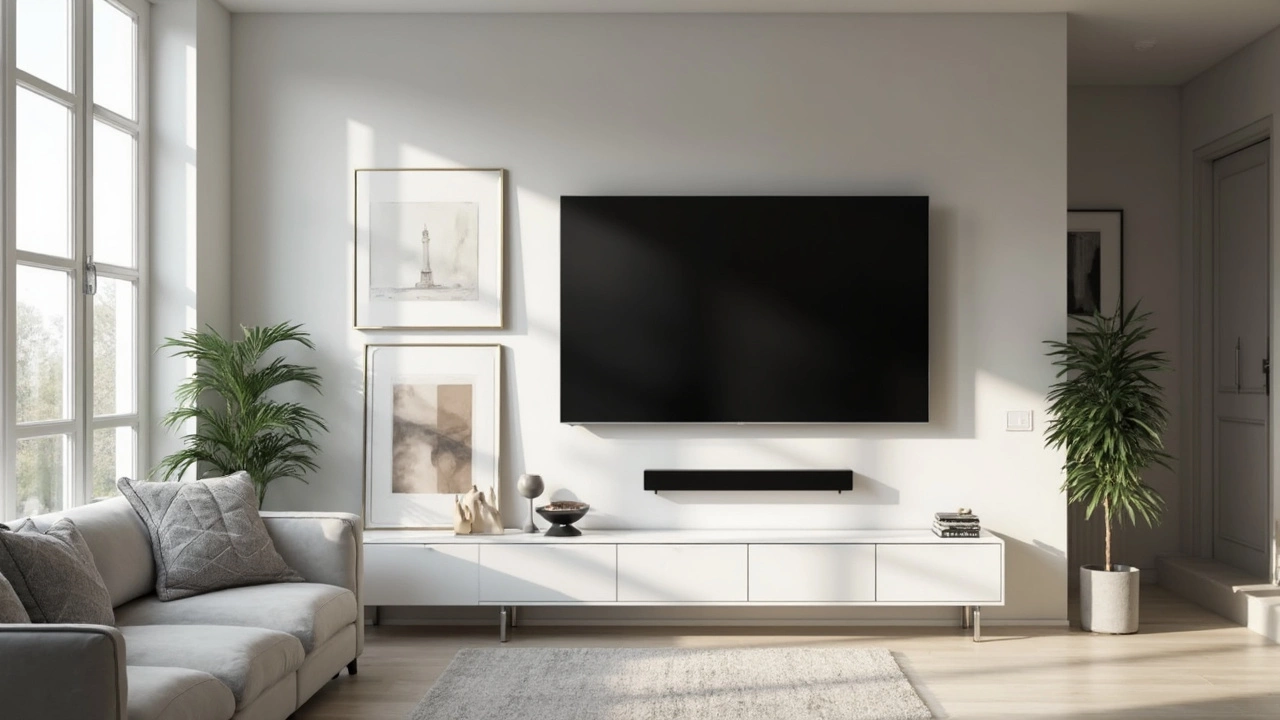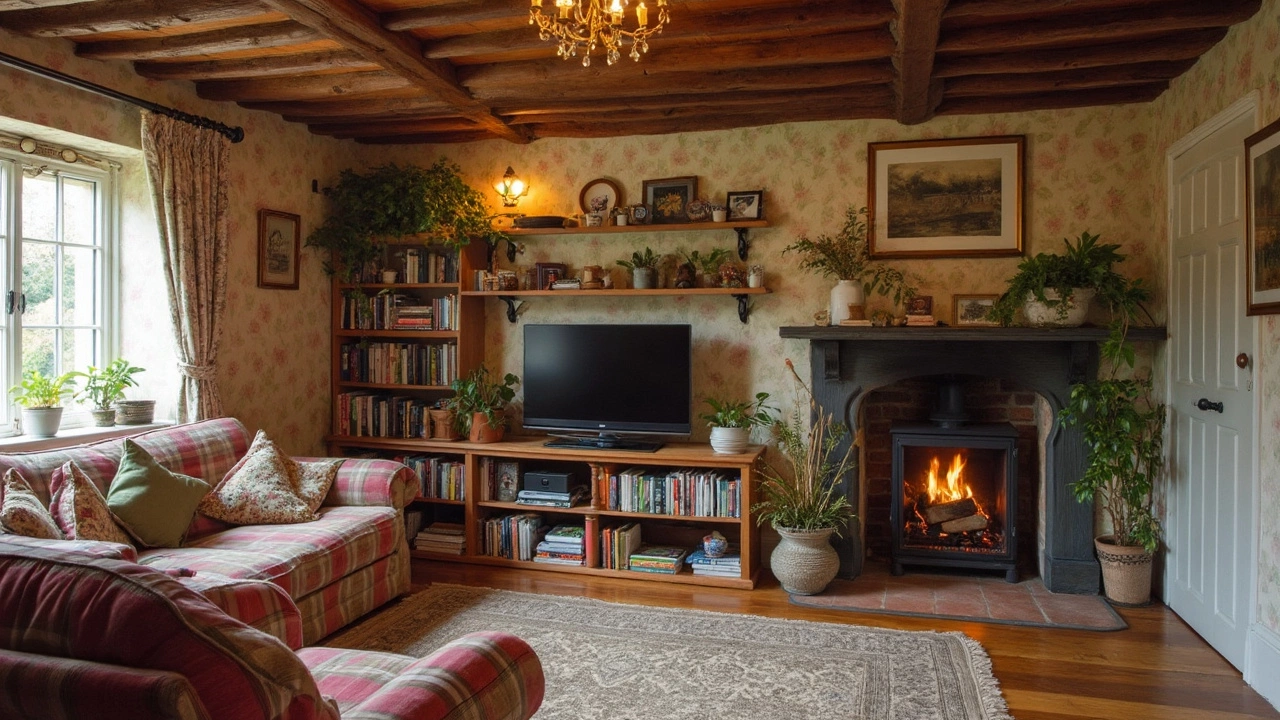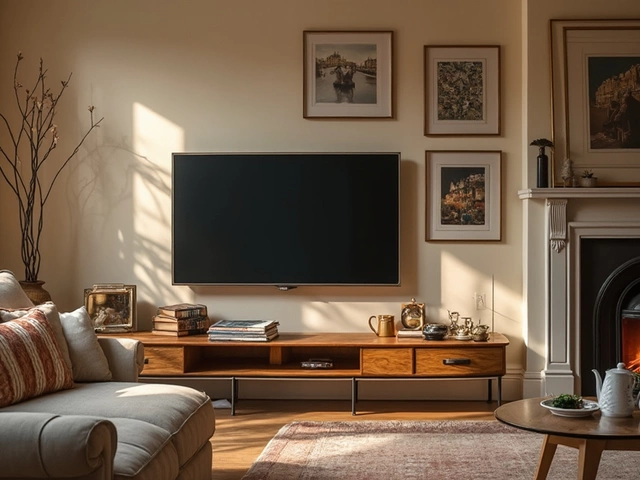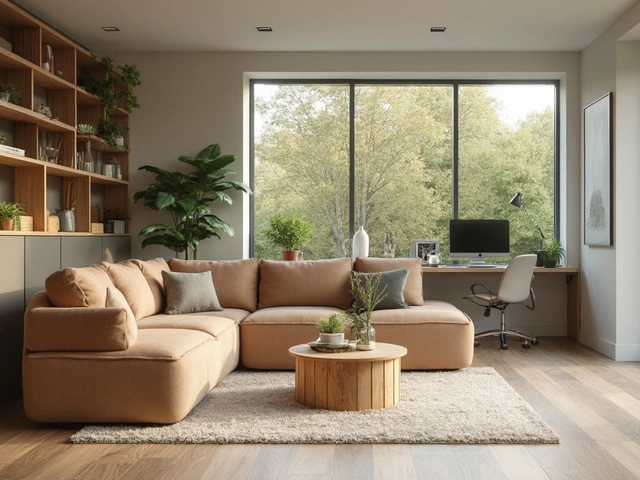 10
Feb,2025
10
Feb,2025
So, you're torn between mounting your TV on the wall or placing it on a stand, huh? Well, it's not as straightforward as it seems. Trust me, I've been there. On one hand, wall-mounting can give your room a clean, modern look that frees up precious floor space. Imagine not having to bump into furniture whenever you're rushing to grab popcorn during a commercial break! Picture frames and decor can seamlessly accentuate your floating TV, turning your living room into a cozy gallery.
However, the traditional TV stand isn’t out of the race just yet. If you’ve got a collection of DVDs, gaming consoles, or that mystery remote you can't seem to throw away, a TV stand offers plenty of storage. You can find stands in all sorts of designs, from rustic wood to sleek glass, fitting right in with your home’s vibe. Plus, if you’re someone who likes to rearrange rooms often, a stand gives you the flexibility to change things up without drilling holes in your walls.
- Space and Room Layout
- Style and Aesthetics
- Viewing Experience
- Installation and Safety
- Storage Needs
- Budget Considerations
Space and Room Layout
When deciding between a TV stand and a wall mount, understanding your room's layout is crucial. Take a good look at the available space and consider how your choice will affect the flow and functionality of the area. If you have a compact living room, wall-mounting might be the way to go. It'll keep the floor clear, making the room feel more spacious.
On the other hand, if you have a bit more room to play with, a TV stand can become a focal point, anchoring the other furniture around it. In open-plan spaces, a TV stand can also act as a subtle divider between areas like the living and dining spaces.
Consider the Viewing Distance
Whatever you choose, pay attention to the viewing distance to the TV. The general rule of thumb is to sit at a distance of about 1.5 to 2.5 times the diagonal screen size of your TV. Too close, and you might find yourself squinting; too far, and you might miss out on the details. For instance, if you have a 55-inch TV, aim to sit somewhere between 6.5 and 11.5 feet away for an optimum viewing experience.
| TV Size (inches) | Recommended Viewing Distance (feet) |
|---|---|
| 32 | 4 - 6.5 |
| 55 | 6.5 - 11.5 |
| 75 | 9.5 - 15.5 |
Check for Wall Integrity or Floor Type
If you're leaning towards a wall mount, make sure that the wall where you plan to hang your TV is sturdy enough to support it. Plaster and brick walls are usually fine, but not all drywall can handle the weight without additional support. Meanwhile, for TV stands, consider the flooring. Hard surfaces like wood or tile will offer more stability than carpet, which could lead to wobbling or imbalance.
In the end, whether you decide to wall-mount or use a stand, making sure it complements your room's layout is key. Whichever option turns your space into a comfy, functional retreat for binge-watching is the right choice.
Style and Aesthetics
When it comes to choosing between a TV stand and a wall mount, the style of your room plays a big role. If you're going for that sleek, minimalistic vibe, wall-mounting your TV can make your space look like a chic magazine spread. It eliminates bulky furniture from your floor plan, which can be a game-changer, especially in smaller rooms. The TV becomes a piece of art hanging on your wall, blending seamlessly with your decor.
On the flip side, a TV stand isn't just a piece of furniture; it's an opportunity to express your style. Whether you love rustic charm, modern elegance, or vintage flair, there's a stand out there that can reflect your personality. This approach to displaying your TV can make your living room feel more inviting and homey.
If your TV will be the centerpiece of your room, think about using a light color stand in a darker room or vice versa to create contrast. A bright stand with ample shelving can also draw the eye, offering a place to showcase books, vases, or any collection you cherish.
Don't forget about cables and electronics, too. Wall-mounted TVs can have those pesky wires sticking out if you're not careful, which could ruin the aesthetic. You'll need to consider solutions like hiding cables behind the plaster or using a cable management kit. Stands can hide cords with built-in cable management, keeping things neat and tidy.
Ultimately, the choice between a TV stand and a wall mount comes down to how much your TV integrates with your other decor and how you want viewers to interact with it. Whether you want it to blend in or stand out, both options offer advantages to help your space reflect your distinctive style.
Viewing Experience
The way you set up your TV can hugely affect your viewing experience. It's more than just a matter of aesthetics—with either a wall mount or a TV stand, you can create a setup that makes your movie nights and binge-watching marathons much more enjoyable.
Height and Comfort
First up, let's talk about eye level. When your TV is mounted on the wall, you have the flexibility to position it at the technically perfect height. Experts suggest that your eyes should be roughly level with the center of the screen when you're seated. This can reduce neck strain and make prolonged viewing sessions more comfortable. The outcome? Less shuffling around in your seat and more focus on what's happening on the screen.
On the other hand, if your TV is on a stand, you might find yourself making slight adjustments with your furniture setup to get that perfect angle. That's not necessarily a bad thing; some folks prefer the simplicity and quick satisfaction of adjusting their space without needing tools.
Viewing Angles
Another point to consider is the viewing distance and angle. Wall mounts often allow for tilting and swiveling, so you can tweak the position based on where you're sitting. Want to stretch out on the couch but don't want to squint? Just adjust the angle. However, if your TV is perched on a stand, remember that most aren't as flexible. You might need to consider the stand's height and the room's seating arrangement.
Glare and Lighting
Glare is a buzzkill when you're trying to watch your favorite show. Positioning your TV on the wall might require you to consider room lighting and windows. Strong backlighting can help reduce glare, giving you a clearer picture. TV stands, on the other hand, let you move the screen easily to dodge those unwanted reflections.
By considering these elements, you can craft a personalized viewing experience that fits your lifestyle and your room's layout.

Installation and Safety
Whether you're going for a TV stand or a wall-mounted setup, getting the installation part right is super important. It’s more than just sticking the TV somewhere and hoping for the best. This decision comes with its own set of challenges, but don't worry—I’ve got your back.
Wall-Mounting Drama
Wall-mounting needs a bit of muscle and technical know-how. First, you’ve got to find those wall studs, or else your TV might come crashing down. Use a stud finder—it saves time and stress. Got your studs? Great! Now, consider the mounting bracket. Ensure it’s compatible with your TV's size and weight. A mismatched bracket is a recipe for disaster, trust me.
- Find Studs: Use a reliable stud finder.
- Choose the Right Bracket: Match it with your TV’s dimensions and weight.
- Check Tools: Have a drill, level, and screwdriver ready.
Play it Safe
Safety is key, folks. Make sure your TV cords aren’t dangling dangerously or running wild. You don’t want anyone tripping over them, especially during a late-night snack run. Consider cord covers to keep things neat and hazard-free.
Choosing the Right TV Stand
If you're opting for a TV stand, look at the weight capacity rating. It’s like choosing a chair that won’t buckle when you sit. Place the stand on a level surface to avoid tipping accidents. If curious kids or playful pets are around, securing the TV with anti-tip straps isn’t a bad idea.
Cost of Installation
Don't forget to factor in potential installation costs. Professional wall-mounting services can range anywhere from $100 to $300. A DIY job might just cost you a pizza for that friend who’s good with tools.
| Installation Type | Estimated Cost |
|---|---|
| Professional Wall-Mounting | $100 - $300 |
| TV Stand Setup | $0 - $50 |
Storage Needs
When it comes to choosing between a TV stand and a wall mount, one thing you can't ignore is how much stuff you have. Let's face it, most of us have a few gadgets, DVDs, or maybe a sound system hooked up to our TV that needs a home.
TV stands are champs in this department. They don't just hold your TV; they come with shelves, drawers, and compartments to house your stuff. It’s a neat way to keep everything together. Got a gaming console? There's probably a perfect spot for it in there. Plus, some stands have cable management systems that make wrangling those tangled cords a little less maddening.
According to interior decorator James Wood, “Choosing the right TV stand can transform your living room, not just aesthetically but also in functionality. It's where style meets storage.”
“Choosing the right TV stand can transform your living room, not just aesthetically but also in functionality. It's where style meets storage.”
Wall mounts, on the other hand, don’t offer any direct storage solutions. However, by freeing up floor space, they can encourage you to get creative. Maybe you can add floating shelves around your wall-mounted TV for that extra storage or decorative flair. It’s all about utilizing vertical space smartly.
Storage Solutions in Numbers
If you're a numbers person, consider this: A TV stand with a size of around 60 inches can handle a TV up to 65 inches and usually offers at least 4-6 storage compartments. Talk about multi-tasking! Plus, with today’s design options, you can find stands that match almost any interior style, both modern and rustic.
On the other hand, here's where a wall mount could shine if there's an abundance of appliances involved. You could install additional wall-mounted shelves which, while maybe not as consolidated as a stand, allow you the choice of positioning those shelves exactly where you want them.
TV stands simply cater to those who love to have their tech all in one place, accessible and organized. But if minimalism and space are your mojo, a wall setup with some added shelving might just hit the sweet spot.
Budget Considerations
Whether you’re a penny pincher or ready to splurge, what you spend can significantly impact your TV setup. Here's the scoop on wall-mounting versus using a TV stand from a budget perspective.
Wall-Mounting Costs
Going the wall-mount route can initially seem cost-effective if you think, ‘Hey, I just need a bracket, right?’ But hold up. That bracket can range anywhere from $20 to $300, depending largely on brand and features. Need a swiveling or extending mount? Expect the price to climb. Hiring a pro to ensure everything’s safely installed? That’ll add to the bill too, with labor costs averaging around $100 to $250, depending on where you live in Australia.
TV Stand Expenses
TV stands come in a range of styles and, consequently, prices. You might snag a basic model for as low as $50, but those with a taste for high-end design might spend upwards of $500 for something chic and sophisticated with extra storage. Sometimes, simplicity pays off, especially if you’re fond of keeping your entertainment area organized without breaking the bank.
Long-term Value
Consider the longevity of your choice. A well-made TV stand might outlive a few of your TV models, giving you consistent value over time. Wall mounts, on the other hand, are largely dependent on wall condition and your commitment to having your TV in the same spot, which could either be a plus or a limitation.
If budget is a major factor, it’s wise to keep an eye out for sales and bundle deals, especially around major sales events. A little patience and research can often save you quite a bit!




